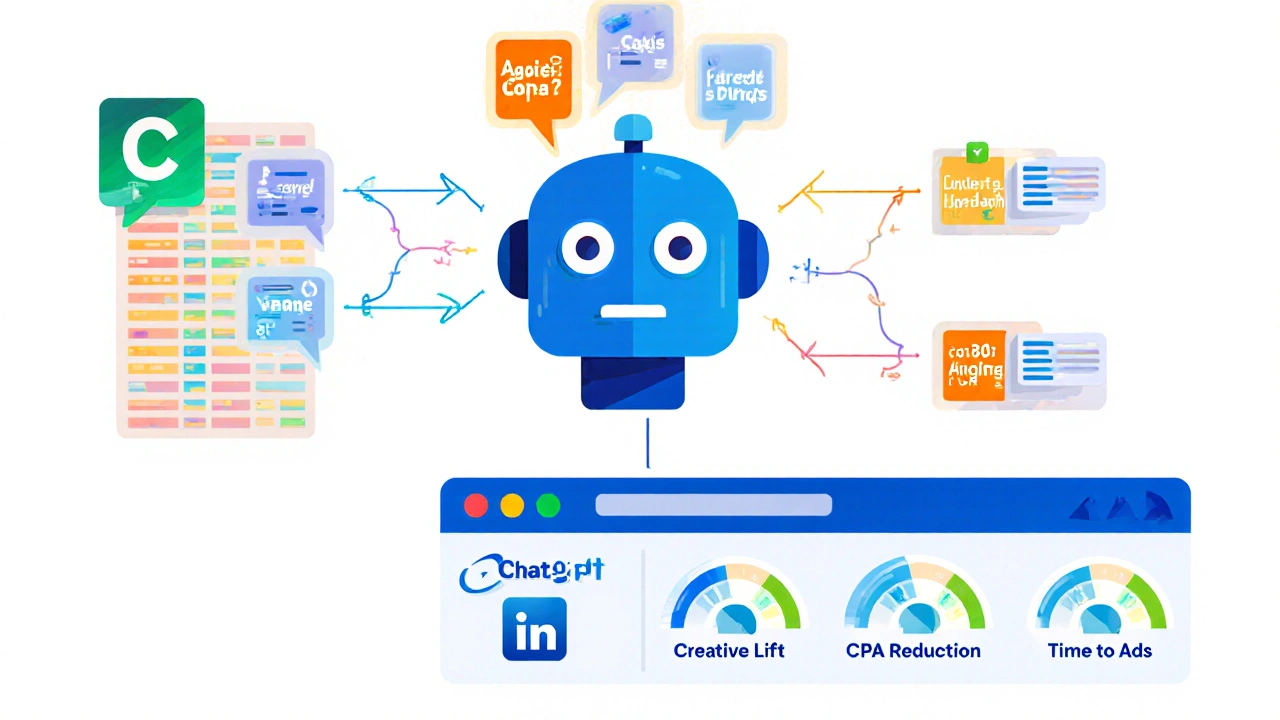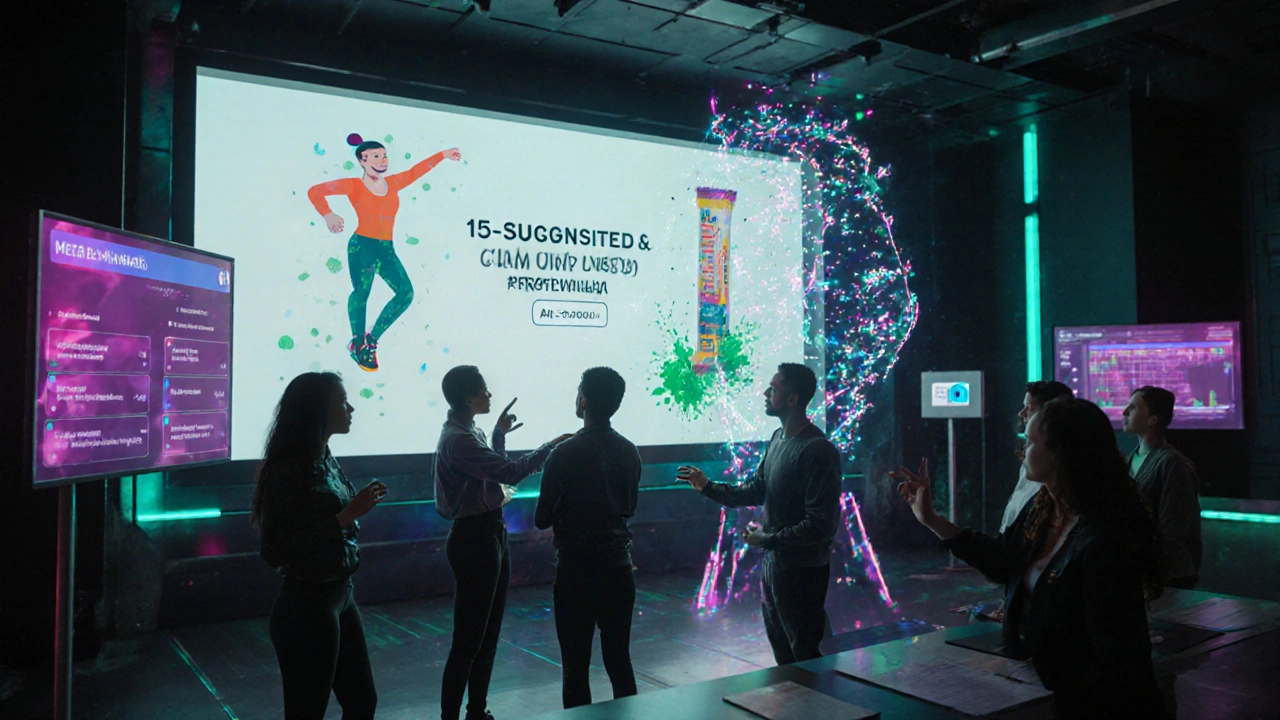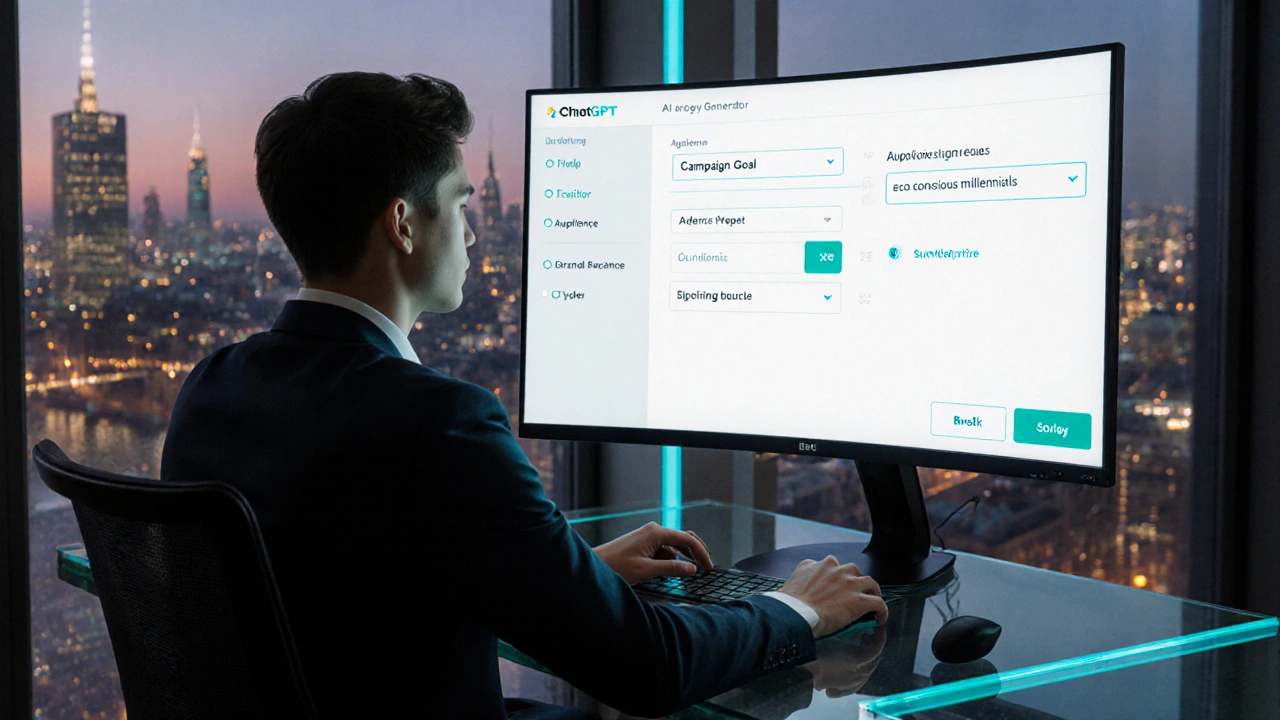ChatGPT Ad Copy Generator
Generated Ad Copy Preview
Prompt Example
"Write a 30-character Facebook headline for a sustainable shoe brand targeting eco-conscious millennials. Brand voice: witty and environmentally focused. Product feature: vegan leather."
Success Metrics
Creative Lift: 0%
CPA Reduction: 0%
Marketers are scrambling to squeeze every ounce of relevance out of their ad spend. What if a single AI could draft headlines, fine‑tune audience segments, and even predict click‑through rates in real time? ChatGPT is a large‑language model that generates human‑like text based on prompts. Since its 2022 launch, it has been upgraded to understand brand voice, comply with ad policies, and integrate with ad platforms via plugins. In short, it’s become the Swiss‑army knife for modern advertising.
Why ChatGPT Matters to Advertisers Right Now
- It can write dozens of ad variations in seconds, slashing creative‑development costs.
- Real‑time data hooks let it adjust copy based on performance signals.
- Built‑in language filters keep copy compliant with platform policies.
These advantages translate into faster campaigns, higher relevance scores, and ultimately a better return on ad spend (ROAS).
Core Capabilities You Can Deploy Today
Below are the six functional blocks that make ChatGPT a game‑changer for advertising.
- AI Copywriting: Generate headlines, body text, and calls‑to‑action (CTAs) that match your brand tone. Studies from the 2024 Marketing AI Survey show a 27% lift in engagement when AI‑generated copy is A/B‑tested against human‑written baseline.
- Prompt Engineering: Craft prompts that steer the model toward specific outcomes. For example, “Write a 30‑character Facebook headline for a sustainable shoe brand targeting eco‑conscious millennials.”
- Audience Segmentation: Feed demographic and behavioral signals into a prompt and receive tailored messaging snippets for each segment.
- Creative Testing at Scale: Generate 10‑100 variants per ad group, then feed them into platform APIs for automated split testing.
- Performance Forecasting: Use ChatGPT’s data‑analysis plugins to predict click‑through rates (CTR) based on historical metrics, allowing you to pre‑optimize before launch.
- Compliance & Brand Safety: Built‑in policy checks flag disallowed language (e.g., health claims, political content) before the ad goes live.
Step‑by‑Step: Building a ChatGPT‑Powered Campaign
Here’s a practical workflow you can copy‑paste into your marketing stack.
- Define Your Goal: Are you aiming for conversions, leads, or brand awareness? Write it as a prompt: “Create a lead‑gen ad for a SaaS product targeting small‑business owners.”
- Gather Audience Data: Export CSVs from Google Analytics, Facebook Audiences, or your CRM. Include age, interests, and past purchase behavior.
- Craft the Prompt: Combine goal and audience details. Example: “Write three Facebook carousel captions for a project‑management SaaS, aimed at founders aged 30‑45 who have recently visited our pricing page.”
- Generate Copy: Send the prompt to ChatGPT via the OpenAI API or an integration tool like Zapier. Review the output for brand voice consistency.
- Auto‑Test Variants: Loop the generated copy into your ad platform’s API, creating separate ad sets for each variant.
- Monitor & Optimize: Use the platform’s reporting to pull CTR, CPC, and conversion data. Feed these numbers back to ChatGPT with a prompt like, “Based on a 1.2% CTR, suggest a more urgent CTA.”
- Finalize & Launch: Choose the top‑performing variant, run a final compliance check, and push the ad live.
Because each step is API‑driven, you can automate the entire pipeline and free up creative teams for strategy work.

Toolstack: Integrations That Make It Easy
Below is a quick comparison of the most popular AI copy platforms you might already be using alongside ChatGPT.
| Feature | ChatGPT (OpenAI) | Jasper | Copy.ai |
|---|---|---|---|
| Model Size (Parameters) | 175B (GPT‑4 Turbo) | 13B (Proprietary) | 7B (Proprietary) |
| Real‑time API latency | ≈200ms | ≈350ms | ≈400ms |
| Prompt‑level control | High (system + user prompts) | Medium (template‑based) | Medium (template‑based) |
| Compliance filters | Built‑in policy engine | Third‑party add‑on | None (manual review) |
| Integration ecosystem | Zapier, Make, native plugins for Meta, Google, TikTok | Zapier, HubSpot, WordPress | Zapier, Shopify |
| Pricing (per 1M tokens) | $15 | $30 | $25 |
ChatGPT wins on speed, flexibility, and compliance, making it the most practical choice for large‑scale ad operations.
Measuring Success: Metrics That Matter
When you let an AI handle copy, you need new ways to gauge its impact.
- Creative Lift: % improvement in CTR or conversion rate compared to the previous human‑written baseline.
- Cost per Acquisition (CPA) Reduction: Track how much cheaper each lead becomes after AI optimization.
- Time to Launch: Measure hours saved from ideation to live ad.
- Compliance Pass Rate: Ratio of AI‑generated ads that clear policy checks on first submission.
Set up a simple dashboard in Google Data Studio or Looker Studio that pulls API data from your ad platforms and the OpenAI usage logs. Watch the numbers shift after each optimization loop.
Common Pitfalls & How to Avoid Them
Even the smartest model can trip up if you feed it the wrong cues.
- Vague Prompts: “Write a good ad.” Result? Generic copy. Always include brand voice, audience, and call‑to‑action in the prompt.
- Over‑Automation: Letting the AI generate 100 variants without human review can lead to brand dilution. Keep a manual QA checkpoint.
- Data Silos: Feeding outdated audience data defeats the purpose. Refresh your CSVs weekly.
- Ignoring Policy Updates: Platform policies evolve. Schedule a monthly review of OpenAI’s policy docs and your own compliance checklist.
- Neglecting Diversity: AI can reinforce existing biases. Use prompts that explicitly request inclusive language.
Address each of these early, and you’ll see smoother adoption across teams.
Future Outlook: What’s Next for AI in Advertising?
By 2026, most major ad platforms will embed generative AI directly into their UI. Expect native “AI‑suggested copy” buttons in Meta Ads Manager and Google Ads. That means the workflow we outlined will become even tighter-your ChatGPT API calls will be just one click away.
Meanwhile, multimodal models (text+image) are already in beta, allowing you to generate ad creatives (banner images, short videos) from a single prompt. Think of a future where you type, “Create a 15‑second video ad for a plant‑based protein bar, bright, upbeat vibe,” and the model outputs a ready‑to‑publish asset.
Staying ahead now means building a solid foundation with text‑only ChatGPT, then expanding into visual generation as the technology matures.

Frequently Asked Questions
Can I use ChatGPT for paid social ads without violating platform policies?
Yes. OpenAI’s policy engine flags disallowed content (e.g., misleading health claims) before the copy is sent to the ad platform. However, you should still run a final manual check because platform‑specific rules can change faster than the AI updates.
How much does it cost to run a large‑scale ChatGPT ad campaign?
Pricing is token‑based. As of October2025, the GPT‑4 Turbo model costs $15 per 1million tokens. A typical 30‑second ad copy (≈150 tokens) plus a few variations runs under $0.01 per ad set. Most budgets are spent on media spend, not on the AI itself.
Do I need any coding skills to integrate ChatGPT into my ad workflow?
No. Tools like Zapier, Make (Integromat), and native OpenAI plugins let you connect ChatGPT to Google Sheets, Meta Ads API, or HubSpot with drag‑and‑drop logic. For deeper customization, a simple Python script can handle bulk token generation.
How can I ensure the AI respects my brand voice?
Create a brand‑voice guide and embed it in the system prompt. Example: “You are a witty, eco‑friendly brand that uses casual language and never exceeds three exclamation marks.” Updating the system prompt keeps every generated piece consistent.
What metrics should I track to prove AI‑generated copy is effective?
Key metrics include creative lift (CTR or conversion uplift), CPA reduction, time‑to‑launch, and compliance pass rate. Combine these in a single dashboard to see the financial impact of AI.


As a passionate marketer, I strive to connect businesses with their target audiences in creative ways. I specialize in developing and implementing digital and content marketing strategies. I am currently working as a Marketing Manager at a renowned firm. In my spare time, I love to share my knowledge about online marketing through my blog. I believe that continuous learning and sharing of knowledge are keys to growth.